Rebecca Lauver, former Stroud Center intern and now restoration professional at the Alliance for the Chesapeake Bay, reflects on a dietary staple of healthy streams.
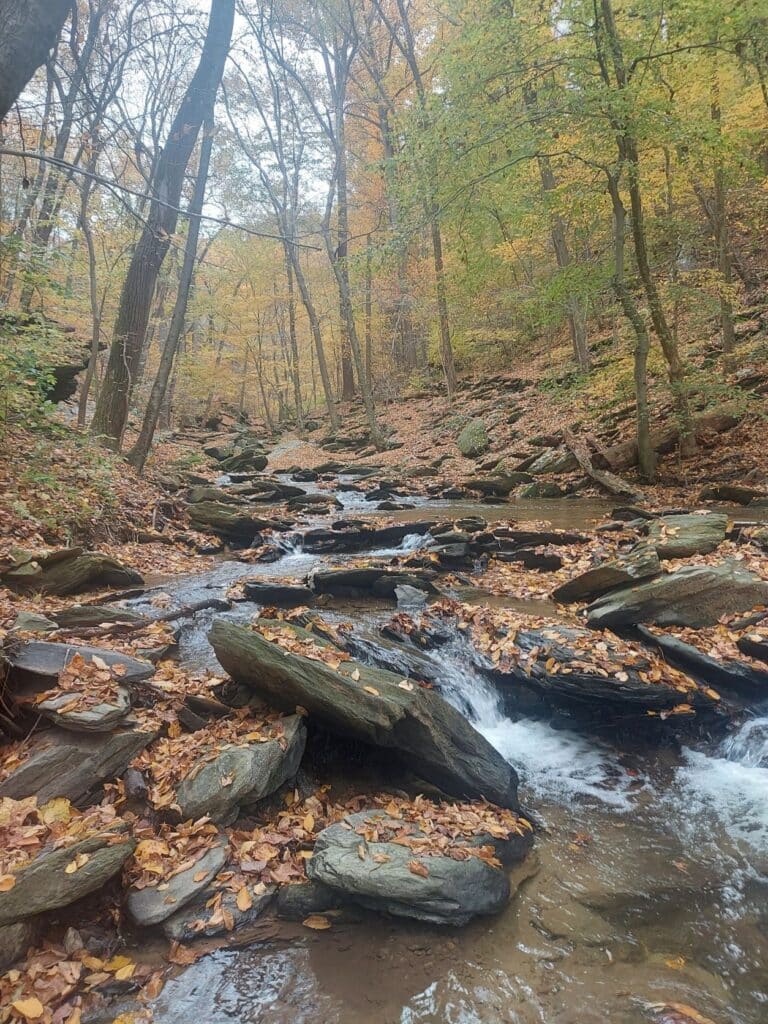
As deciduous trees begin to green up with spring, it is worth considering the ecological importance of their predecessors, the leaves that turned brown and fell from the trees last fall. These leaves help sustain the ecosystem that formed them.
Once tree leaves fall to the ground, they turn into leaf litter. Leaf litter provides food and shelter for the organisms below and improves soil health. Whenever possible, it is good to leave leaves on the ground where they are! If these leaves happen to be near a stream, there’s a good chance that some of them will make their way into the water. Suddenly, the leaves find themselves in a wet environment filled with new microbes, aquatic insects, and a wild ride of riffles and runs.
Once in the stream, there are three processes that leaves may undergo: leaching, conditioning, and fragmentation. Leaching is when the soluble organic compounds in a leaf are pulled into the water. Stroud Water Research Center has coined the combination of leached organic compounds and stream water as “watershed tea.” Just like when you stick a tea bag into a mug of water and see the tea disperse throughout the hot water, so do the nutrients from the leaves disperse throughout the stream. The dissolved organic compounds provide important nutrition for the microbes and other organisms within the stream.
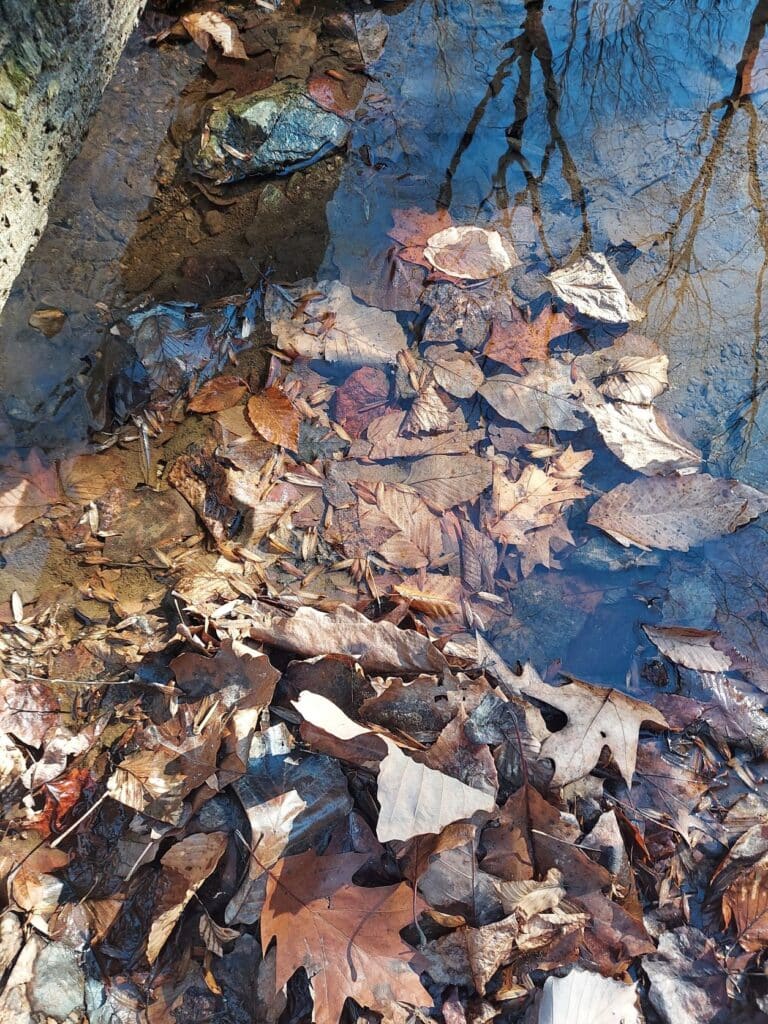
Another process that the leaves might undergo is called conditioning. When a leaf is conditioned, fungi and bacteria in the water start to break down the leaf tissue and absorb nutrients for themselves. A conditioned leaf is easier for some other organisms to feed on. In a way, conditioning “pre-digests” the leaves, making it an easier meal for other organisms, like aquatic macroinvertebrates, that may need some help with their digestion process.
The final route a leaf can take is fragmentation. A leaf can become fragmented through “fungal maceration, physical abrasion, and shredding by invertebrates” (Abelho, 2001). You could imagine that during a flood, a leaf would get tossed around and caught on branches and rocks in the water, ripping it into smaller pieces. There is also a feeding group of macroinvertebrates called shredders (in addition to scrapers, predators, and collector/gatherers) that rip leaves into smaller pieces as well. Shredders feed on leaves that fall into the stream, breaking apart this coarse particulate organic material into finer pieces that another feeding group, called collector/gatherers, can then feed on. Shredders take big pieces of leaves and turn them into smaller ones that other organisms can eat as well. Shredders include some caddisflies, some stoneflies, amphipoda, some beetles, and a range of other macroinvertebrates.
In order for leaves to undergo any of these three processes, they have to be held in the water for an extended period of time. The structure of a stream, from the way it curves to the distribution of riffles and pools, influences how many leaves it can capture and how long it can hold them. Most leaves travel between 0-70 meters downstream before they are trapped (Abelho, 2001).
One way leaves can be caught within a stream is by getting snagged by another one of trees’ gifts to the streams: woody debris. Woody debris can include anything from a fallen tree trunk to smaller branches. You’ve probably seen instances where a large branch fell across a stream, resulting in a backup of other branches, twigs, and leaves. This buildup is called a debris dam, and it is another important feature of a healthy stream.
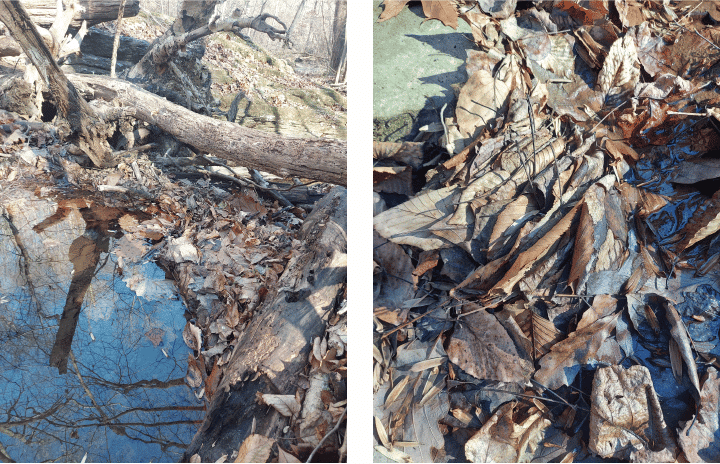
Within a debris dam, you may notice that there are a lot of leaves piled up on each other. These piles are called leaf packs and they can also occur on a smaller scale behind rocks or smaller branches in a stream. Leaf packs are hot spots of macroinvertebrate and microbial activity and are locations where leaching, conditioning, and fragmentation can occur. If you are curious to learn more about leaf packs and discover some educational tools around leaf packs, check out the Stroud Center’s website for the Leaf Pack Network!
Just as there are different mixtures of tea for human consumption, there are also different mixtures of watershed tea. The varying species of leaves falling into streams create unique mixtures for the organisms awaiting their own tea. This is another reason why encouraging native species along streams is crucial; the organisms within the stream rely on a specific tea combination that nonnative leaves can’t create.
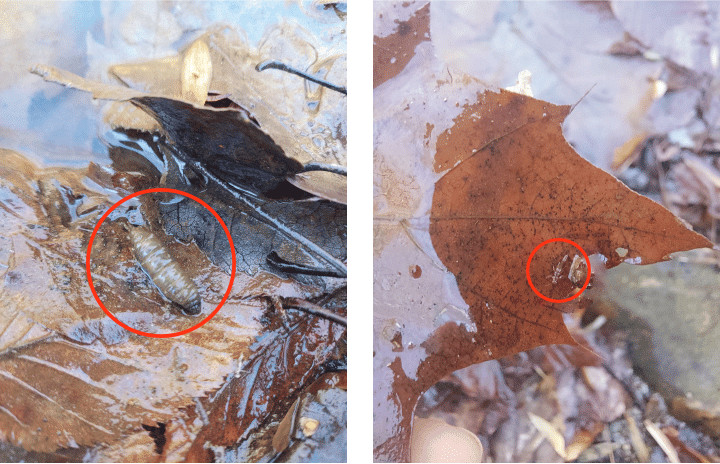
Different species of tree leaves also decompose in their own way. For instance, alder leaves generally decompose quickly while some species like oaks take much longer due to the chemical and physical properties of their leaves. Having a diversity of native leaves within a stream supports a diversity of organisms.
There are many potential paths for the deciduous leaf once detached from a tree after a spring and summer of growth. Perhaps it fell to the ground in your backyard where it provides cover for small critters through the winter, or in an upland forest where it will gradually turn into soil through terrestrial processes that mirror aquatic ones. Or perhaps it fell into your neighbor’s stream, where it will now be leached, conditioned, and fragmented by the awaiting aquatic organisms. Whatever its path, this leaf now gives its nutrients back to the local ecosystem — an essential gift to the stream.
Rebecca Lauver followed her own unique path. While a high school student at Lancaster Mennonite School, she heard a presentation by a Stroud Center staff person and learned about the organization’s entomology internship program. Thereafter at Messiah College, she joined the Stroud Center’s entomology intern team for three successive years. Now a forest projects coordinator with the Alliance for the Chesapeake Bay, Lauver protects Pennsylvania streams by implementing reforestation projects.
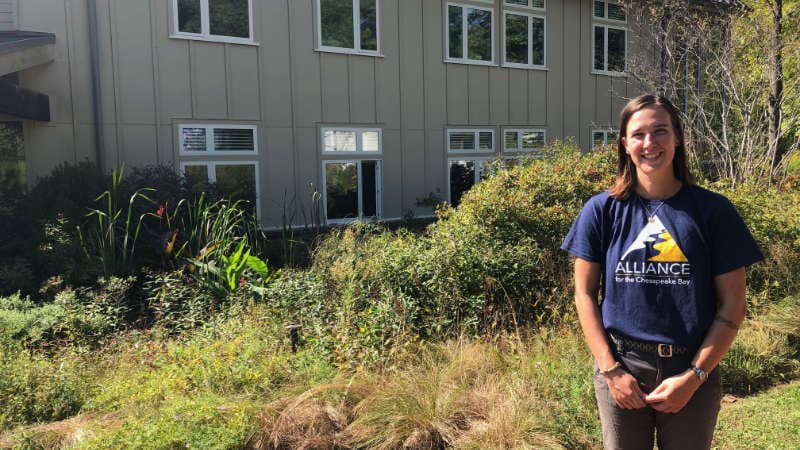
A version of this article first appeared on the Alliance for the Chesapeake Bay blog and is reprinted with permission.



